As It Happens is a Canadian interview show that airs on CBC Radio One in Canada and various public radio stations in the United States through Public Radio Exchange. Its 50th anniversary was celebrated on-air on November 16, 2018. It has been one of the most popular and acclaimed shows on CBC Radio.
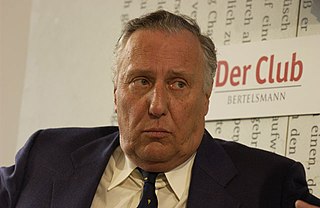
Frederick McCarthy Forsyth is an English novelist and journalist. He is best known for thrillers such as The Day of the Jackal, The Odessa File, The Fourth Protocol, The Dogs of War, The Devil's Alternative, The Fist of God, Icon, The Veteran, Avenger, The Afghan, The Cobra and The Kill List. Forsyth's works frequently appear on best-sellers lists and more than a dozen of his titles have been adapted to film. By 2006, he had sold more than 70 million books in more than 30 languages.

Wing Commander Guy Penrose Gibson, was a distinguished bomber pilot in the Royal Air Force during the Second World War. He was the first Commanding Officer of No. 617 Squadron, which he led in the "Dam Busters" raid in 1943, resulting in the breaching of two large dams in the Ruhr area of Germany. He was awarded the Victoria Cross, the highest award for gallantry in the face of the enemy that can be awarded to British and Commonwealth forces, in the aftermath of the raid in May 1943 and became the most highly decorated British serviceman at that time. He completed over 170 war operations before being killed in action at the age of 26.

Royal Air Force Chivenor, or more simply RAF Chivenor, was a Royal Air Force station located on the northern shore of the River Taw estuary, on the north coast of Devon, England. The nearest towns are Barnstaple and Braunton.

633 Squadron is a 1964 war film directed by Walter Grauman and starring Cliff Robertson, George Chakiris, and Maria Perschy. The plot, which involves the exploits of a fictional World War II British fighter-bomber squadron, was based on the 1956 novel of the same name by former Royal Air Force officer Frederick E. Smith, which itself drew on several real RAF operations. The film was produced by Cecil F. Ford for the second film of Mirisch Productions UK subsidiary Mirisch Films for United Artists. 633 Squadron was the first aviation film to be shot in colour and Panavision widescreen.
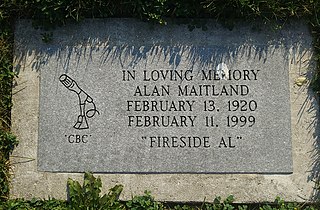
Alan Maitland was a Canadian radio broadcaster. He was a longtime host for CBC Radio, starting as an announcer in 1947 and was later cohost of As It Happens from 1974 to 1993. He was also part of the administration of CBC Radio for a brief period in 1958 between assignments as an announcer.
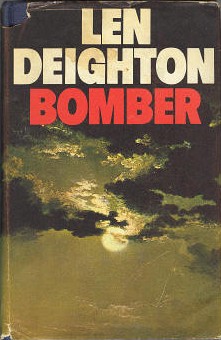
Bomber is a novel by Len Deighton that was published in the United Kingdom in 1970. It is the fictionalised account of "the events relating to the last flight of an RAF Bomber over Germany on the night of June 31st, 1943", a deliberately non-existent date, in which an RAF bombing raid on the Ruhr area of western Germany goes wrong. In each chapter, the plot is advanced by seeing the progress of the day through the eyes of protagonists on both sides of the conflict.

Captain Eric Melrose "Winkle" Brown,, Hon FRAeS was a British Royal Navy officer and test pilot who flew 487 types of aircraft, more than anyone else in history.

Group Captain Percy Charles "Pick" Pickard, was an officer in the Royal Air Force during the Second World War. He served as a pilot and commander, and was the first officer of the RAF to be awarded the DSO three times during the war. He flew over a hundred sorties and distinguished himself in a variety of operations requiring coolness under fire.
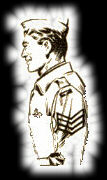
Matt Braddock, VC and bar, is a fictional World War II bomber pilot who first appeared in prose adventures in the story paper The Rover in 1952, and later as a comic strip in The Victor (1961–83) and Warlord (1974). Some of his stories were published in book form as I Flew With Braddock.

Geoffrey Raoul de Havilland Jr., OBE was a British test pilot. He was the son of Geoffrey de Havilland, the English aviation pioneer and aircraft designer.

The Shepherd is a 2023 British drama short film written and directed by Iain Softley and starring Ben Radcliffe and John Travolta. Travolta serves as an executive producer of the film. It is based on Frederick Forsyth's 1975 book of the same title. The film was released on Disney+ on December 1, 2023.

Air Marshal Sir Harold Brownlow Morgan "Micky" Martin, was an Australian bomber pilot and senior commander in the Royal Air Force (RAF). He took part in Operation Chastise, the RAF's "Dambusters" raid in 1943, and was described by journalist Sir Max Hastings as "one of the three great bomber pilots of the war". He rose to become a senior officer in the RAF, commanding RAF Germany and later serving as Air Member for Personnel, a member of the Air Council, the RAF's controlling body.
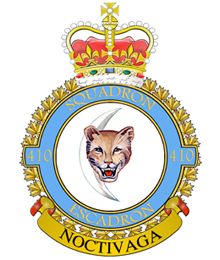
410 Tactical Fighter Operational Training Squadron, nicknamed the "Cougars", is a Royal Canadian Air Force aircraft squadron currently located at Canada's primary training base for the CF-18, at Cold Lake, Alberta. The squadron was formed during the Second World War as an RCAF squadron under the Royal Air Force (RAF), at RAF Ayr, near Prestwick, in Scotland.

Diana Barnato Walker MBE FRAeS was a pioneering British aviator. In World War II, she became one of the first women pilots of the Air Transport Auxiliary, flying 80 types of aircraft and delivering 260 Spitfires. In 1963, she became the first British woman to break the sound barrier, flying at Mach 1.6, which also represented a world air speed record for women.

The de Havilland Mosquito was a British light bomber that served in many roles during and after the Second World War. Mosquito-equipped squadrons performed medium bomber, reconnaissance, tactical strike, anti-submarine warfare and shipping attack and night fighter duties, both defensive and offensive. Mosquitos were widely used by the RAF Pathfinder Force, which marked targets for night-time strategic bombing. Despite an initially high loss rate due to low-level daylight attack operations, the Mosquito ended the war with the lowest losses of any of the aircraft types in RAF Bomber Command service.
Flight Lieutenant Cecil Frederick "Jimmy" Rawnsley was a Royal Air Force night fighter observer radar operator and gunner during the Second World War. He flew many of his sorties with John "Cat's Eyes" Cunningham who was credited with 20 kills, of which 19 were claimed at night, and 17 of which were achieved with Rawnsley.
Thomas Frederick Dalton-Morgan, was a fighter pilot and flying ace of the Royal Air Force during the Second World War. He flew during the Battle of Britain, and is counted amongst the ranks of 'The Few'.

Operation Oyster was a bombing raid made by the Royal Air Force (RAF) on 6 December 1942 upon the Philips works at Eindhoven, Netherlands. The Philips company was a major producer of electronics equipment, including vacuum tubes for radio communication. Prior to the Battle of the Netherlands in 1940, Philips was known to be a leading research firm in infrared and radar technology. To ensure accuracy and minimise casualties among the Dutch citizens, the raid had to be undertaken during the day.

Charles Patrick Green was a South African-born British Royal Air Force (RAF) fighter pilot during World War II who was credited with eleven confirmed kills and another three probable. Most of these were during night missions, including seven over a period of three nights in June 1943, actions for which he received numerous awards. Green was also a member of the British bobsleigh team in the mid-1930s, winning several medals including World Cup gold and Olympic bronze.

















